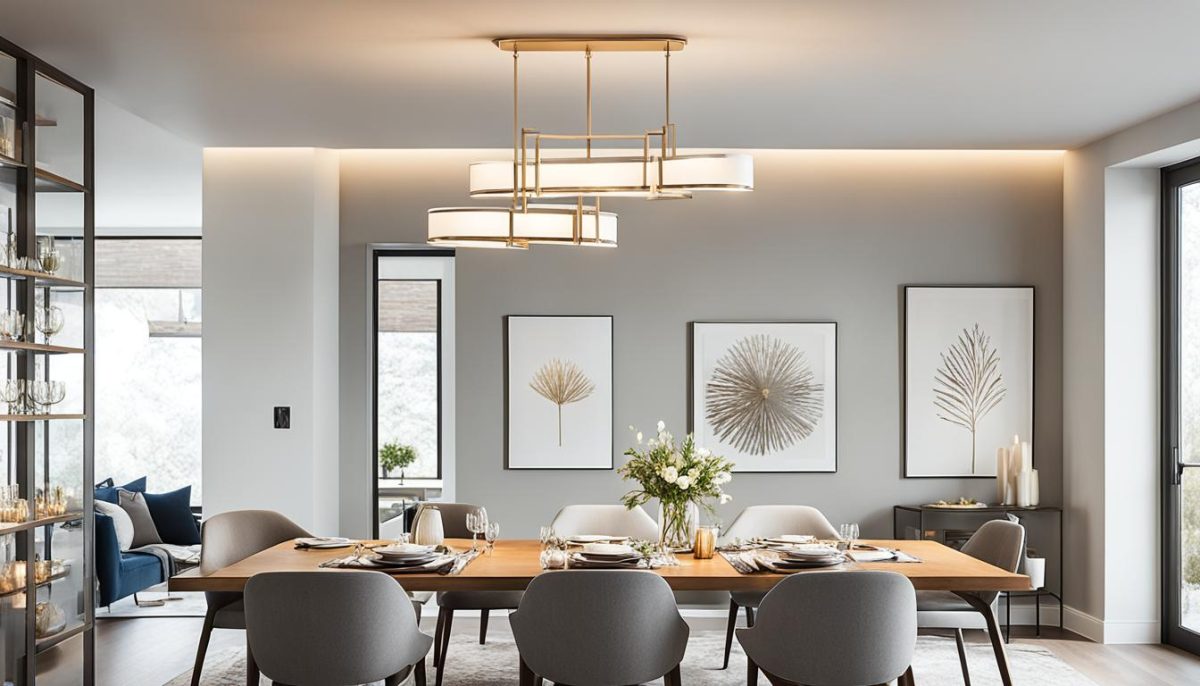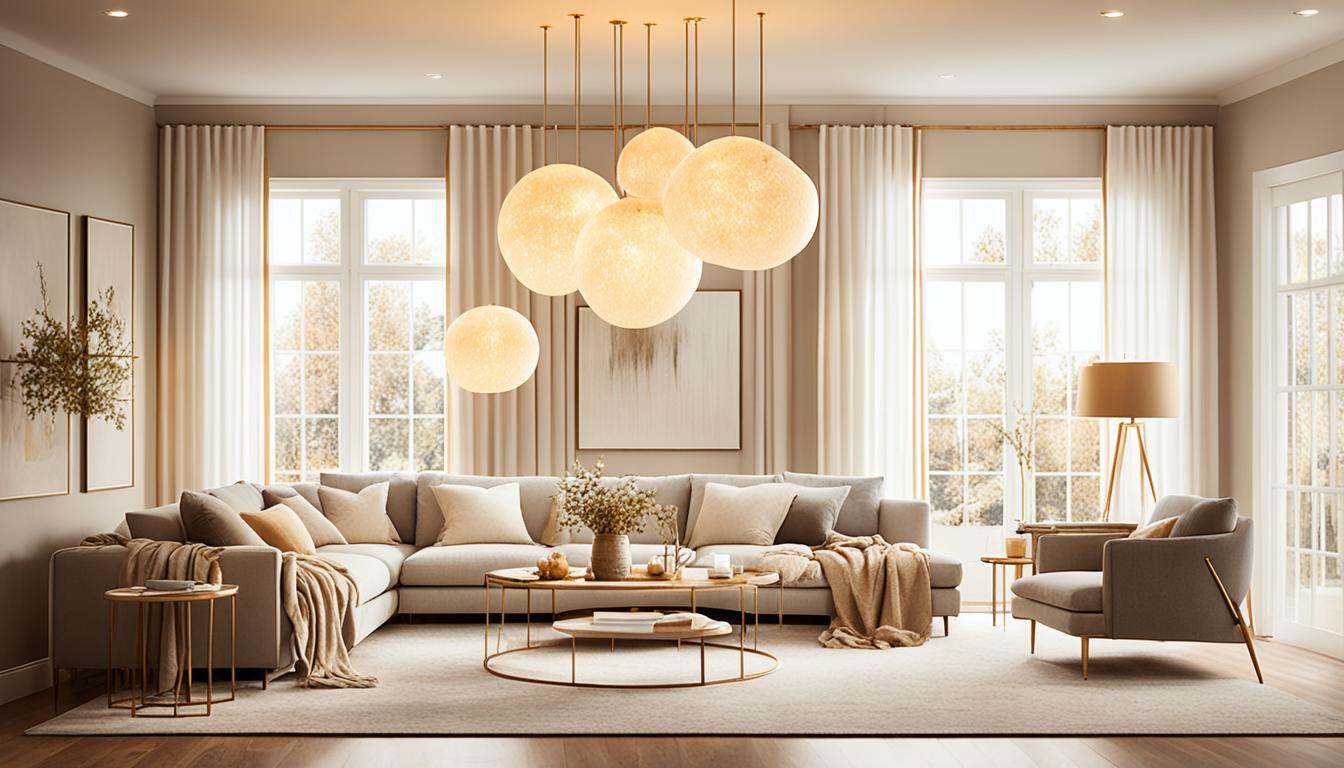Welcome to our comprehensive guide on how to hang interior lighting that will bring glamour and glow to your space. Lighting is a crucial element in creating a welcoming and aesthetically pleasing atmosphere in your home. In this article, we will walk you through the process of choosing the perfect fixtures, planning the layout and placement, and installing and hanging your interior lighting.
Whether you’re looking to update your living room, bedroom, or any other area, the right lighting can transform the ambiance and make a statement. By following our expert tips and step-by-step instructions, you’ll be able to create a beautifully lit haven that exudes elegance and sophistication.
Throughout this guide, we will cover everything you need to know, from selecting the ideal lighting fixtures for your style and space to strategically placing them for optimal illumination. We’ll also provide insights into different lighting techniques that will enhance the overall atmosphere and allow you to highlight specific areas or objects in your interior.
So, whether you’re a design enthusiast or simply want to elevate the ambiance of your home, join us in exploring the world of interior lighting and discover how to hang fixtures that will add glamour and glow to your living space.
Choosing the Perfect Interior Lighting Fixtures
Before you start hanging your interior lighting, it’s important to choose the perfect fixtures that will match your style and create the desired atmosphere. The right lighting fixtures can make a huge difference in the overall look and feel of a room, so it’s worth taking the time to find the perfect ones.
In this section, we will explore different types of lighting fixtures that you can consider for your space. From elegant chandeliers to sleek pendant lights and versatile sconces, there are endless options to choose from. We’ll provide insights on how each type of fixture can enhance the ambiance and functionality of your rooms.
When selecting lighting fixtures, it’s crucial to consider various factors such as size, material, and style. The size of the fixture should be proportionate to the room. A large chandelier in a small space can overwhelm the room, while a small pendant light in a large room may not provide adequate lighting. Similarly, the material and style of the fixture should complement the existing decor and reflect your personal taste.
Types of Lighting Fixtures:
- Chandeliers: Adding a touch of opulence and sophistication, chandeliers are a popular choice for foyers, dining rooms, and living rooms. They can serve as a focal point and create a dramatic effect in a room.
- Pendant Lights: Pendant lights are versatile and can be used in various spaces, from kitchens and dining areas to bedrooms and hallways. They come in different shapes and sizes, allowing you to find the perfect fit for your style and the room’s dimensions.
- Sconces: Sconces are wall-mounted fixtures that provide functional and ambient lighting. They are suitable for hallways, bathrooms, and bedrooms, adding a touch of elegance while saving floor space.
| Type of Lighting Fixture | Best For | Benefits |
|---|---|---|
| Chandeliers | Foyers, dining rooms, living rooms | – Creates a focal point in the room – Adds elegance and sophistication – Provides ample lighting |
| Pendant Lights | Kitchens, dining areas, bedrooms, hallways | – Versatile and adaptable – Can be grouped for a stylish effect – Provides focused lighting |
| Sconces | Hallways, bathrooms, bedrooms | – Saves floor space – Creates a warm and inviting ambiance – Provides both functional and decorative lighting |
By considering these factors and exploring different lighting fixtures, you can find the perfect ones that align with your style and illuminate your space in the most enchanting way.

Planning the Layout and Placement of Interior Lighting
Now that you’ve carefully chosen your lighting fixtures, it’s time to plan the optimal layout and placement for your interior lighting. This crucial step will ensure that your space is beautifully illuminated and complements your overall interior design.
When planning the layout, it’s important to assess your space and consider factors such as ceiling height, natural light sources, and the functionality of each area. By strategically placing your lighting fixtures, you can highlight architectural features, create focal points, and provide the right amount of light for various activities.
Different lighting techniques can be incorporated into your design to enhance the ambiance and functionality of your space. Here are three key lighting techniques to consider:
- Ambient Lighting: This type of lighting provides a general illumination to the entire room. It sets the overall mood and helps eliminate harsh shadows. Common fixtures for ambient lighting include recessed lights, flush mounts, and track lighting.
- Task Lighting: Task lighting is focused illumination that assists in performing specific activities. It helps prevent eye strain and ensures proper visibility. Examples of task lighting include desk lamps, under-cabinet lights, and reading lights.
- Accent Lighting: Accent lighting is used to highlight or draw attention to specific areas or objects in a room. It adds depth, texture, and visual interest to your space. Wall sconces, track lights, and picture lights are common fixtures for accent lighting.
By combining these different lighting techniques, you can create a layered and dynamic lighting scheme that transforms your space and reflects your personal style.
Take a look at the example below to see how different lighting techniques can be combined and placed in a living room:
| Lighting Technique | Fixture | Placement |
|---|---|---|
| Ambient Lighting | Recessed lights | Evenly distributed across the ceiling |
| Task Lighting | Floor lamp | Next to the reading chair |
| Accent Lighting | Wall sconces | On either side of the fireplace |
In this example, the recessed lights provide general illumination throughout the room, the floor lamp offers focused lighting for reading, and the wall sconces highlight the fireplace, creating a warm and inviting ambiance.
Remember, the layout and placement of your interior lighting can significantly impact the overall look and feel of your space. So take the time to plan and experiment with different arrangements to achieve the desired effect.
Installing and Hanging Interior Lighting
Now that you have carefully chosen the perfect interior lighting fixtures for your space, it’s time to bring them to life by installing and hanging them properly. Follow these step-by-step instructions to ensure a smooth and safe installation process.
1. Prepare the Electrical Connections: Before you begin, make sure the power is turned off at the main circuit breaker. Carefully remove the existing light fixture, exposing the electrical connections. Double-check that the wires are not live using a voltage tester. If they are, consult a professional electrician to handle the wiring.
2. Secure and Align the Fixtures: Once the electrical connections are secure and safe to work with, mount the lighting fixture according to the manufacturer’s instructions. Use a screwdriver or appropriate tools to fasten the fixture securely to the ceiling or wall. Make sure the fixture is level and aligned properly to ensure a visually pleasing result.
3. Adjust Height and Angle: To achieve the desired effect and illuminate your space effectively, take the time to adjust the height and angle of your installed fixtures. Experiment with different heights and positions to find the ideal balance of ambient and task lighting. Consider the purpose of each room and the activities that take place within it when making these adjustments.
By following these simple steps, you can confidently install and hang your chosen interior lighting fixtures. Remember, safety should always be a priority when working with electrical connections. If you are unsure about any step of the process, it’s best to consult a professional electrician to ensure a successful and safe installation.




